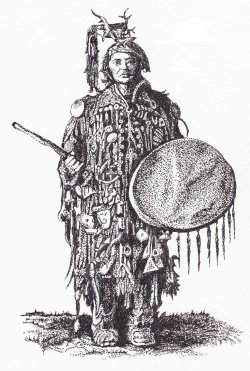
The remote region of the Altai Mountains at the borders of Russia, China, and Mongolia has been the home of peoples practicing shamanism for millennia. Archaeologists have discovered the remains of an Upper Paleolithic culture at Mal’ta in the Siberian Altai near Lake Baikal, dated to around 24,000 BCE. What is most intriguing is that the Mal’ta culture shares similarities with the Paleolithic cultures of Europe.
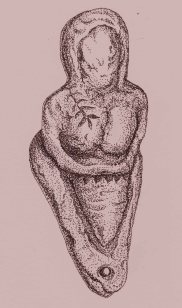
A number of “Venus figurines” believed to be fertility symbols with stylized and exaggerated breasts and buttocks have been found, carved from mammoth ivory—curiously similar to the Paleolithic European Venus statuettes.
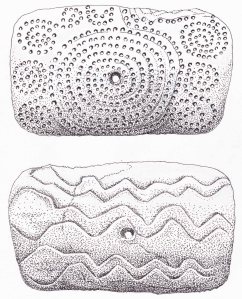
-Mammoth ivory, Mal’ta, Siberia 24,000 BCE
Another important find from Mal’ta is a panel of mammoth ivory on which a design of seven spirals is carved, consisting of a large central spiral of seven coils. On its reverse side are etched three meandering forms which appear to represent serpents. According to historian Geoffry Ashe, the spiral design represents the earliest known version of a labyrinth pattern, as well as the symbolic use of the number seven—which occurs frequently in later Altaic shamanic lore. Ashe insists that the worldwide distribution of the labyrinth pattern– found across Europe, Asia, India, and North America–must have originated in northern Asia. He points out that only from there could people and motifs have spread across Eurasia as well as to North America at a time when the continents were still connected by the land-bridge of the Bering Straights.
Recent genetic studies of ancient human remains discovered at Mal’ta support this theory. They also suggest previously unrecognized genetic links between ancient Europeans and modern Native Americans. A grave found in Mal’ta contained the body of a boy who died around 24,000 years ago. Scientists were amazed to discover that his mitochondrial DNA belonged to the same lineage as that found among the populations who settled Europe around 44,000 years ago. Equally exciting was the discovery that it matches a large proportion of the DNA of modern Native Americans. The testing of another skeleton, dating to 17,000 years ago, found the same genetic markers of European origin. These as well as other genetic discoveries suggest the Paleolithic people who settled Europe spread much further east across Eurasia than previously thought—all the way to Siberia during the Last Global Maximum, when glaciers were at their thickest. The research led by Dr. Eske Willesrslev of the University of Copenhagen concludes that the people who crossed the Bering Straight to settle North America over 15,000 years ago were genetically related to Paleolithic Europeans. He states: “We estimate that 14 to 38 percent of Native American ancestry may originate through gene flow from this ancient population”.
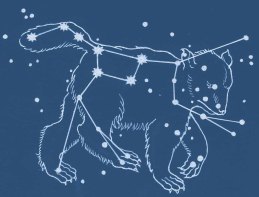
As well as genetic similarities, there are similarities in myths among populations spread across the northern hemisphere, such as those associated with the constellation Ursa Major–“the Great Bear” and its neighboring stars. The Basques of northern Spain, the Finns, as well as the Khanti and Mansi peoples of Siberia have myths of the bear’s origins from the heavens near the constellation Ursa Major. The Algonquins of North America interpreted the four stars of the quadrangle of Ursa Major as a cosmic bear. The ancient Greek myth of Calliope, a follower of the goddess Artemis, tells how she was turned into a bear and placed in the heavens as the constellation Ursa Major.
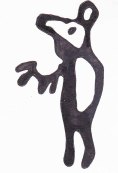
Bear ceremonialism involving veneration of bears, as well their ritual sacrifice, was practiced across the northern hemisphere by the Basques, the Sami people of Scandinavia, the Siberians as well as tribes of North America. Bears were revered by all of these peoples as ancestors of humans and messengers between mankind and the gods.
Genetic research suggests there was an ancient genetic flow between Europeans, Siberians, and Native Americans. This supports the theory of trans-cultural diffusion of prehistoric myths, motifs and shamanic practices across the northern hemisphere. The conclusion I draw is that shamanism spread through migrations of Paleolithic peoples sometime around 24,000 years ago, to become became the substratum of religions, myths, and magics around the world–accounting for their many similarities.

Why doesn’t this surprise me? It makes perfect sense that over the course of thousands of years people migrated thousands of miles, spreading their DNA as they went.
I suspect that the reason Ursa Major caught the attention of Paleolithic people, inspiring myths that spanned continents was that the Great Bear constantly circles a bright star off the lip of the Big Dipper (that group of stars in Ursa Major that looks like a water dipper). I don’t think it’s in the drawing you have in your post. That’s Polaris, often called the North Star because it is always in the north, the only star in the sky that never moves–all the other stars circle around it.
LikeLike
The shared DNA of Paleolithic (and modern northern Europeans) with modern Native Americans confirms for me that we share the same genetic as well as cultural heritage of shamanism.
The star closest to the North Pole or Pole Star actually changes due to the 26,000 year cycle of precession…it was close to the star Deneb during the Upper Paleolithic–which is in the constellation Cygnus.This is discussed in the previous “Paleo-Astronomy” post. Thanks for the comments!
LikeLike
“Collins and Schmidt point out a carving on one of the pillars that appears to represent a vulture with wings articulated like human arms, as well as anthropomorphized feet, proposing it may depict a shaman”
David assuming the vulture’s the shaman’s spiritu’l form might not the birds to the other side of the stone be a visual pun of his corporeal form’s face?
https://photos.google.com/photo/AF1QipPLaUgGtxoegSMV1H006cgHPkn41rz79xS3LZTP
The startling thing for me’s I’ve been waiting for someone to notice this ‘face’ for a while now then I just read Robert Schoch’s ‘impossible’ take in Nexus on a connection between Gobekli Tepe and Easter Island an’ I suddenly realise how much this Bird Man’s apparent face resembles one o’ them Easter Island heads with the ceremonial ‘hats’ on!
LikeLike
HiAlan, and thanks for the comment. I unfortunately wasn’t able to access the link you sent. I have read a couple of Schoch’s books and find his theories of prehistoric plasma events intriguing and credible. As far as cultural links between Easter Island and Gobekli Tepe, I guess we will have to wait for more definite carbon dating from the former before we can draw conclusions. It is not impossible, since Mesolithic and Neolithic peoples were mariners. The spread of megalithic monuments during the Neolithic suggests global cultural contacts. In my blog I argue for the spread of Paleolithic bear ceremonialism across the northern hemisphere to the New World during the Ice Age. On the other hand, local invention of bird cults in both places is a simple explanation. Birds were spirit allies of shamans around the world. Another possibility–bird-headed men appear in Late Paleolithic cave art in Europe, and perhaps the Solutreans who according to Collins traded in obsidian, or other Late Paleolithic people spread that cult to Gobekli Tepe?
LikeLike
Reblogged this on Die Goldene Landschaft.
LikeLike